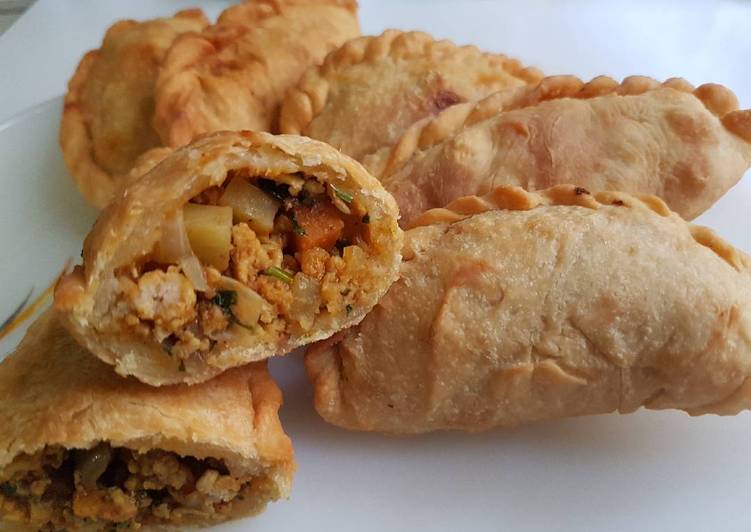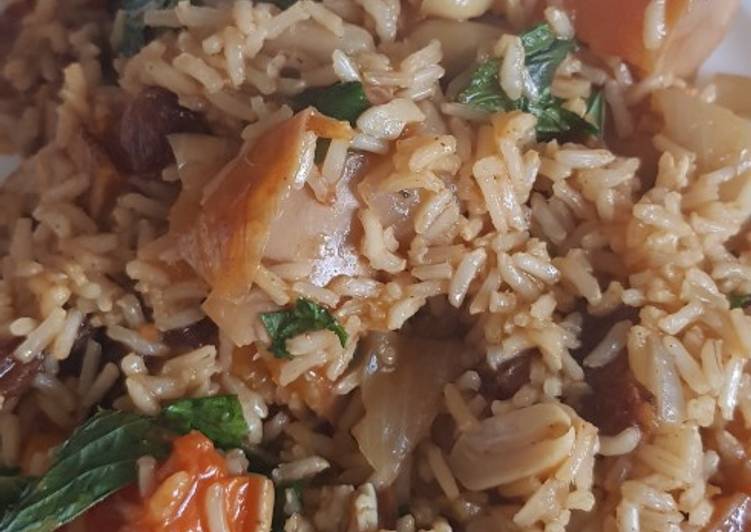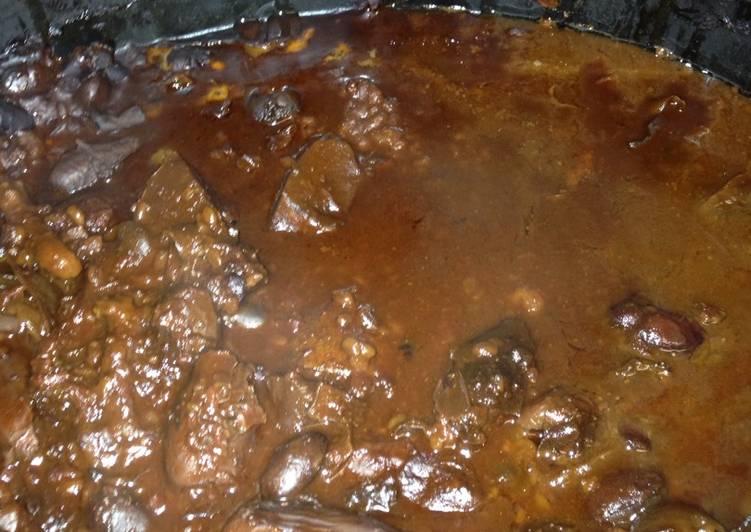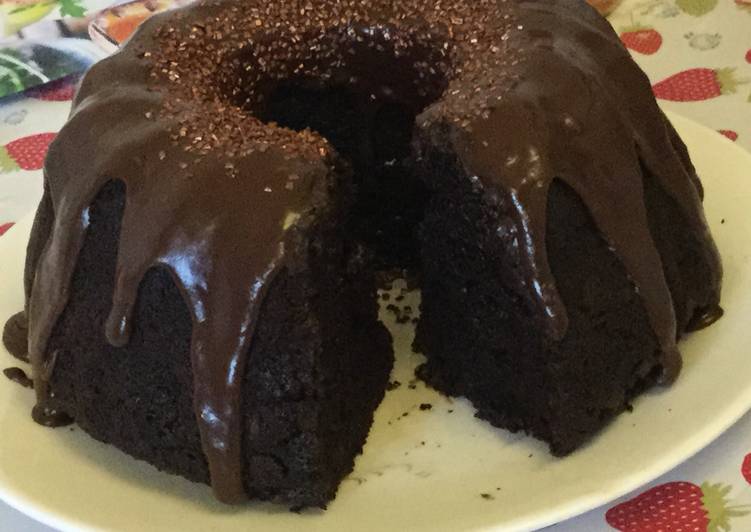Easy Way to Make Favorite Malaysian Curry Puff - Karipap

Malaysian Curry Puff - Karipap Recipe. How to prepare it? What are the ingredients? Cooking tips and more… This is one of my favourite food recipe, this time i will make it a little bit tasty.
Curry Puff is without doubt one of our favourite local snacks - a combination of potato curry filling, wrapped in a buttery pasty, absolutely delicious. A curry puff is a snack of Malayan origin.
Here is the best “Malaysian Curry Puff - Karipap” recipe we have found so far. This is gonna really delicious.
Ingredients of Malaysian Curry Puff - Karipap
- Prepare of [Dough].
- You need 400 g of All Purpose Flour.
- You need 2-4 Tbsp of Margerine (Planta).
- Prepare 1/2 cup of Cooking Oil (heated).
- Take as needed of Salt (between 2 pinch to 1 tsp).
- Make ready 1/2 cup of Cold Water (or more).
- Take as needed of Flour (for working).
- It’s of [Filling] - Check my dedicated recipe on Curry Puff Filling.
- Prepare 250 g of Chicken.
- It’s 100 g of Potatoes.
- Take 100 g of Carrots.
- Prepare 30 g of Garlic (minced).
- Take 70 g of Onions (finely diced).
- Take 30 g of Fresh Coriander (finely chopped, separate Stems & Leaves).
- Take 2 Tbsp of Curry Powder.
- Prepare 2 Sprigs of Curry Leaves.
- Take 1 cube of Chicken Stock.
- It’s 1 cup of Water.
- It’s 4 Tbsp of Cooking Oil.
- Take as needed of Salt.
- Take 1 tsp of Sugar.
- You need of [Deep Frying].
- It’s 2 of + cups Cooking Oil.
A traditional Savoury breakfast favourite in Malaysia, the Karipap or Curry Puff resembed a pie stuffed with a delicious chicken curry.Curry Puff is a common snack in Malaysia and Singapore, apart from curry chicken fillings it comes with many different fillings as well like eggs.Curry Puff or often called karipap by the Malays, is a type of deep fried semi-circular shaped stuffed pastry with a wide varieties of fillings.It is one of the most popular snack in South East Asia, namely Malaysia, Singapore, Indonesia, Thailand and India.
Malaysian Curry Puff - Karipap instructions
- COOK FILLING: I made a separate post regarding this, as putting everything in one post gets overwhelming. Check out my Chicken Curry Puff Filling post..
- DOUGH DRY: in a large mixing bowl, mix together Flour, Salt and Margerine. Make the Margerine is mixed well by rubbing the Margerine and Flour with your hands..
- DOUGH WET: add in the Heated Cooking Oil and mix well. Next, SLOWLY add the Cold Water, making sure it's mixed well a little at a time, and knead it until it forms a workable, pliable dough. Then let it rest for 30 minutes, covered..
- DOUGH BALL: cut off a gold ball size of dough and arrange it. On a flat work surface, dust the the area with Flour to prevent sticking. Take 1 ball and spread to 1/4 inch thick. It can't be too thin or it won't hold the filling..
- FILL: take a spoonful of Filling and place it in the middle of the dough ball, avoiding the edges. Then, fold the dough and close the edges neatly..
- CRIMP: starting from either ends, 1) pinch the edges outwards to form a ridge. 2) Then fold the ridge at an angle, away from the starting point. 3) Next continue the pinch the next section until you reach the far end. PIC: clockwise from top left..
- DEEP FRYING: heat 2 cups or more of Cooking Oil until hot. Deep fry the Curry Puffs until golden. Serve hot. TIP: you don't have to cook the Curry Puffs immediately, you can save them in the fridge until you want it. Cooked Curry Puffs get soggy with time..
It is believed that curry puffs were created by the Malay people from the Malays Peninsula and they closely resemble the Portuguese empanada.In Malaysia, curry puffs are a snack enjoyed by every person of all ages.They are usually eaten for breakfast, as afternoon snacks, or as entrée.
The most common filling is a combination of.Try this Malaysian curry puffs recipe, with video demonstration.Call it curry puffs, Karipap or 咖哩角, it all means the most lovable snacks that you can find in every turn and corners in Malaysia.It is a snack enjoyed by different ethnic groups in this multicultural country, by everyone, even the kids!Curry puffs are one of the many favourite 'kuih' in Southeast Asia.





